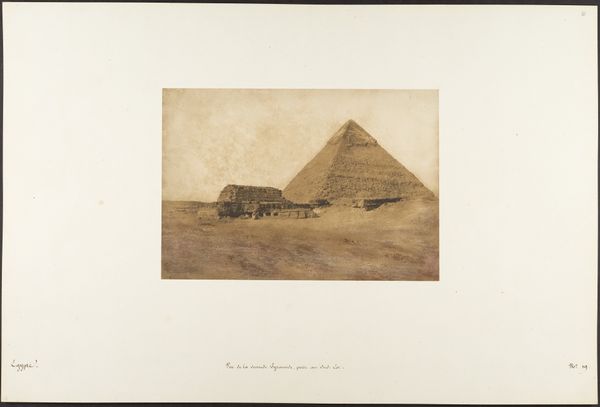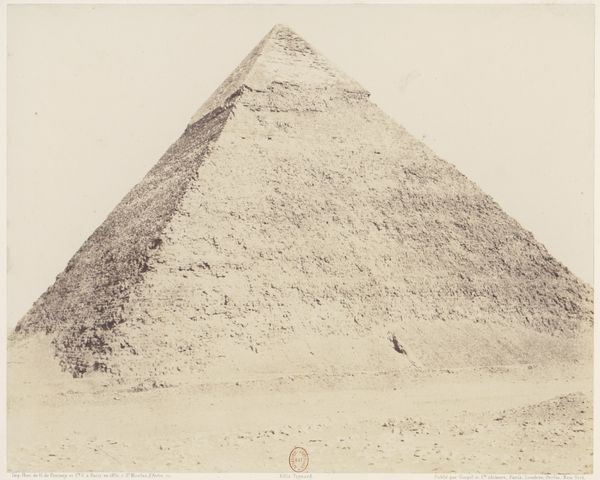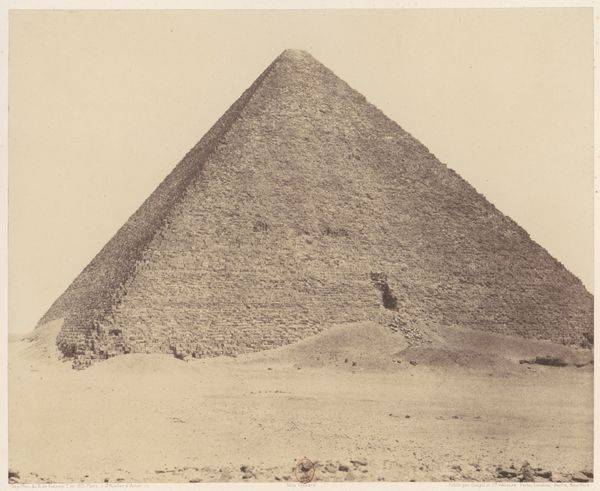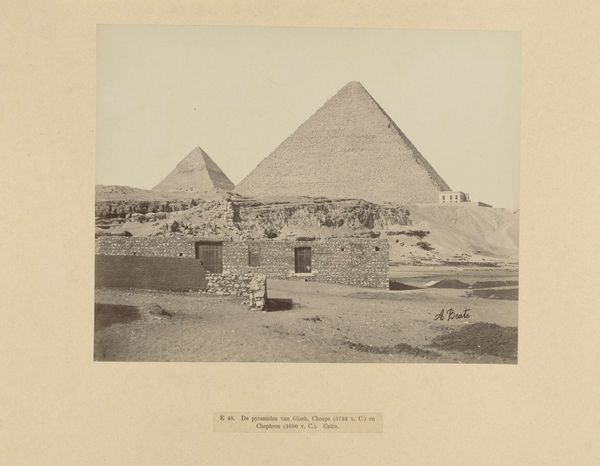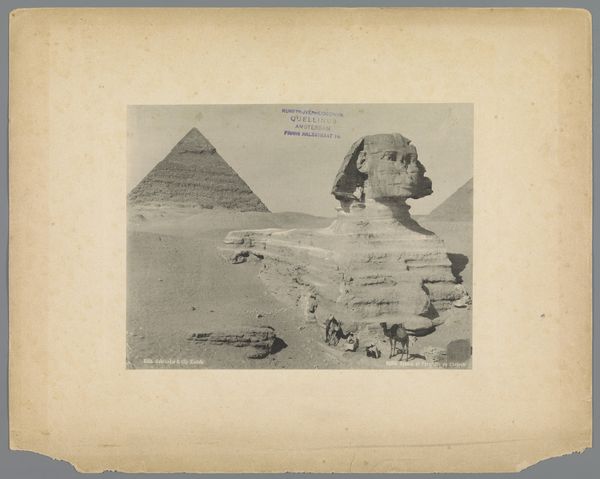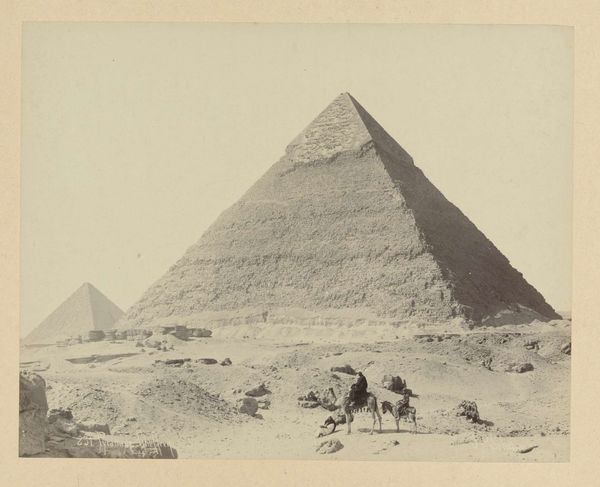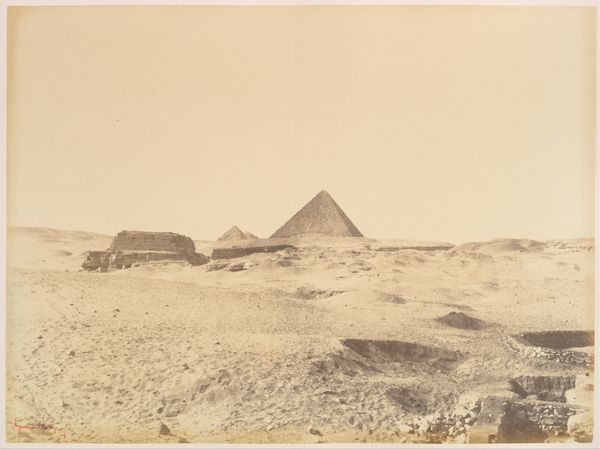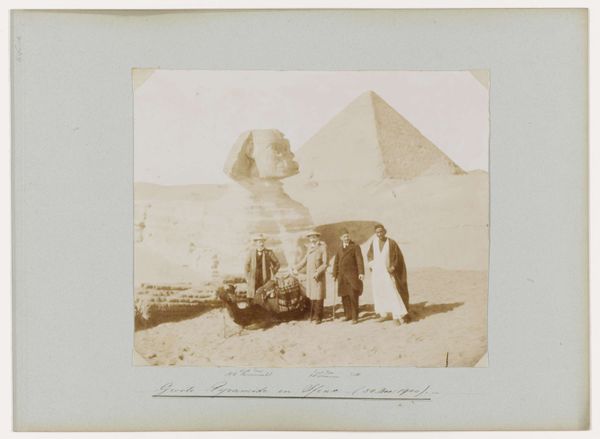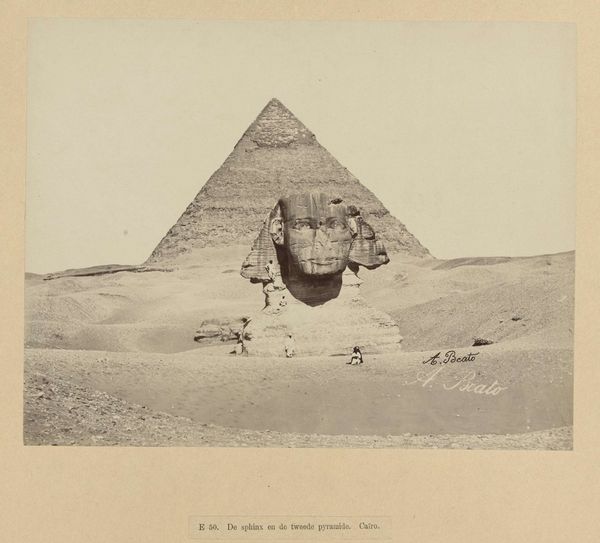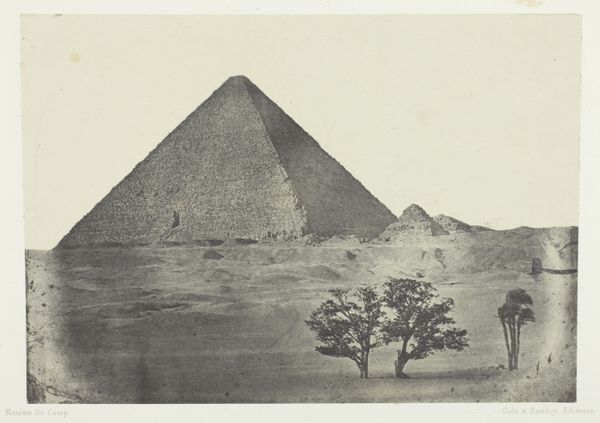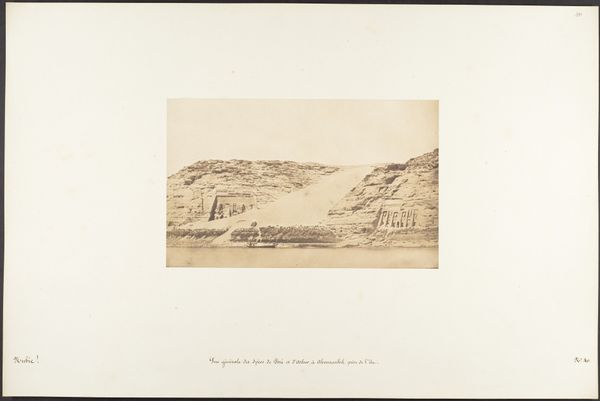
Vue de la grande pyramide (Chéops) prise à l'angle S.E. 1849
0:00
0:00
print, photography, gelatin-silver-print
# print
#
landscape
#
ancient-egyptian-art
#
photography
#
geometric
#
ancient-mediterranean
#
gelatin-silver-print
#
academic-art
Dimensions: Image: 6 3/8 × 8 9/16 in. (16.2 × 21.8 cm) Mount: 12 5/16 × 18 11/16 in. (31.2 × 47.5 cm)
Copyright: Public Domain
Editor: Here we have Maxime Du Camp’s "View of the Great Pyramid (Cheops) Taken from the Southeast Angle," a gelatin silver print from 1849. I'm struck by how this image seems to capture both the monumentality of the pyramid and the desolation of the surrounding landscape. It feels very staged, very deliberate. How would you interpret this work, given its historical context? Curator: That’s a keen observation. Consider this image within the burgeoning field of 19th-century photography and its intersection with European colonialism. Du Camp was on a mission commissioned by the French government. It's crucial to remember photography, at this moment, becomes a tool of documentation, but also of possession. What story does this image tell about France’s relationship with Egypt? Editor: So, it's not just a simple landscape photograph then. It’s meant to stake a claim? Curator: Precisely! Think about who gets to decide what is worth documenting, who controls the narrative, and for what purposes. The “desolation” you see may also be a visual reinforcement of a European narrative – a land in need of intervention or rediscovery by the West. Who do you think the intended audience was for an image like this, and how might they have perceived it? Editor: Probably a European audience back in France. It seems like they're supposed to think, "Wow, this ancient wonder needs… something. French intervention, maybe?" Curator: Exactly. It's also important to consider the public’s appetite for these kinds of images back in Europe. There was immense fascination with ancient cultures, and photographs like this fed into that while simultaneously reinforcing colonial power structures. I wonder, does knowing that change your initial reading of the photograph’s mood or composition? Editor: Absolutely. The starkness feels less about inherent desolation now, and more like… manufactured drama. Thank you, that shifted my perspective quite a bit! Curator: And it helps us consider the powerful role art plays in shaping not only how we see but how we understand history. A photograph can be an instrument of power just as much as a brush or pen.
Comments
No comments
Be the first to comment and join the conversation on the ultimate creative platform.
